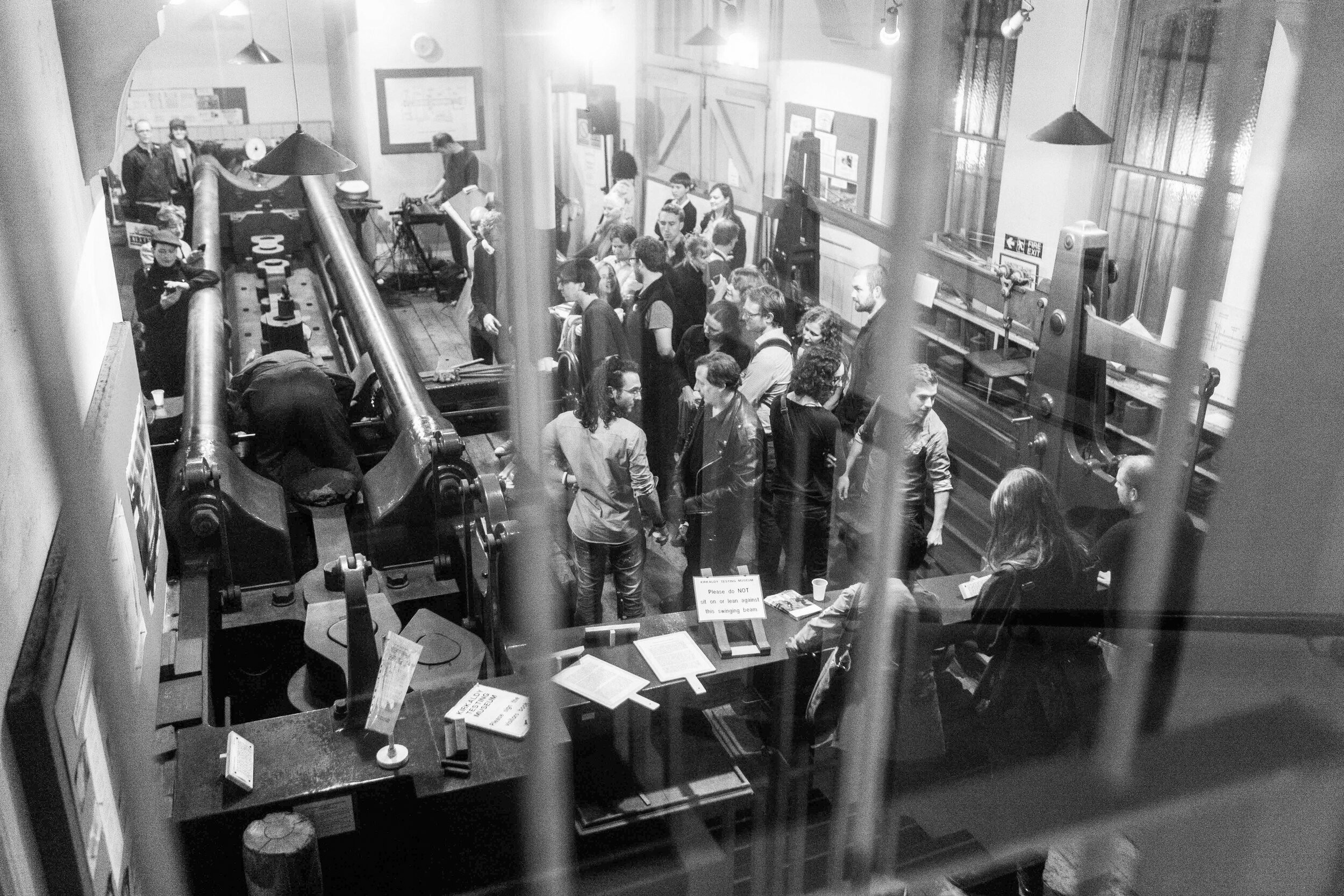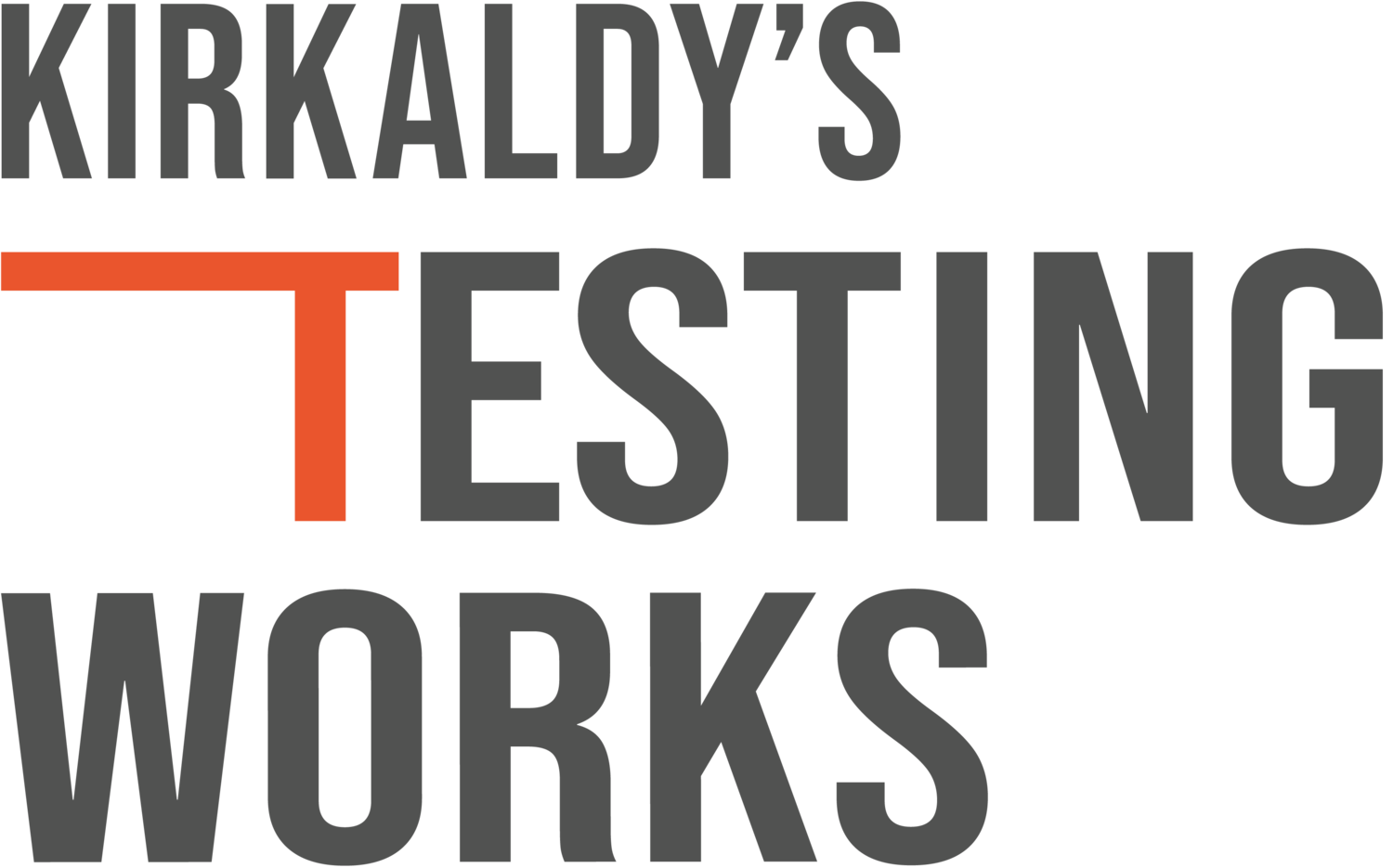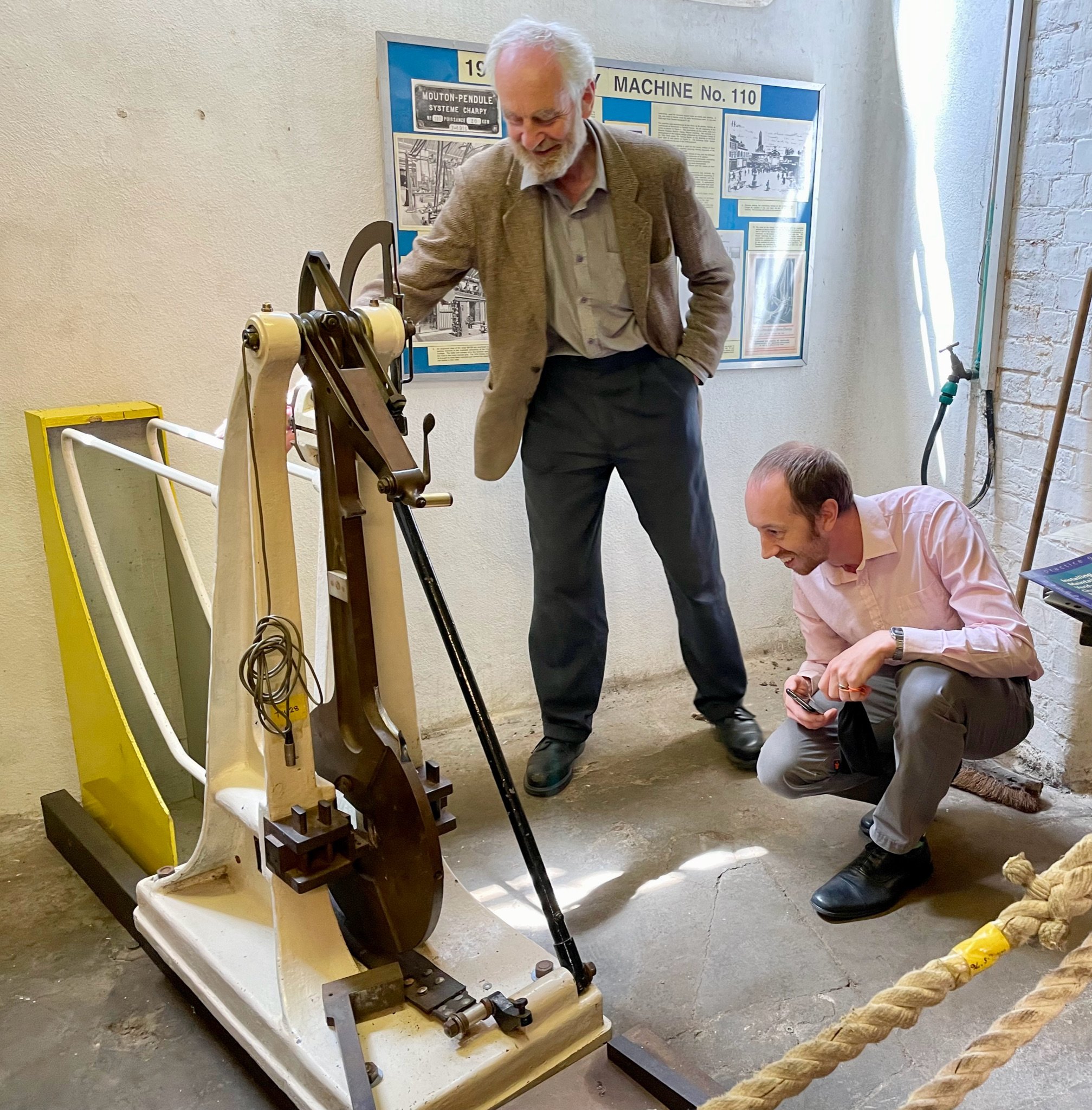“This was an extraordinary moment in British engineering: the railway age had begun, the British Empire was powering towards its zenith and free trade was forcing rapid developments in commercial technology. Sail gave way to steam, the paddle wheel to the screw propeller, and Kirkaldy could see the importance of testing the new materials they were using.”
— Sophie Cambell, ‘London’s 116-ton secret’, The Telegraph
Facts not Opinions — why test?
The Industrial Revolution transformed the world, but engineers found themselves on a crash course in understanding the forces affecting new construction materials. Variable quality in materials had catastrophic results. The collapse of a new railway bridge over the river Dee in 1847 and of the Tay Bridge in 1879 showed the need for engineers to rely on thorough, scrupulous testing. In other words, on Facts, not Opinions.
Engineer David Kirkaldy (1820-1897) saw the urgent need for scientific, standardised testing of these structural materials. Prior to opening the Testing Works, he spent 13 years developing machines and testing techniques. In 1862 he had published the results of several years of systematic testing he made on wrought iron and steel. This work put him alongside other pioneering engineers of his day, Bazalgette, Bessemer and Brunel. Then David Kirkaldy designed, patented and commissioned his mighty 47 feet and 7-inch Universal Testing Machine. This unique machine can still be seen here today.
Kirkaldy’s Testing Works established the scientific testing of structural building materials. As well as tests on columns, links and girders, and other materials like concrete, bricks and wood, the Testing Works carried out forensic testing on failed structures. Most famously, in 1880 David Kirkaldy examined pieces recovered from the fatal collapse of the Tay Bridge. His findings, in contradiction to the view of the official Court of Inquiry, was one of the reasons his 1897 obituary in The Engineer described him as “honest as the sun; outspoken and fearless as a Viking” as well as being “the best hated man in London”.

“Boilers exploded, chains broke, and bridges collapsed due to poor-quality materials and sometimes counterfeit engineering components.”
— Prof David Perrett, Engineering and Technology Magazine


“Built in 1865 to David Kirkaldy’s design, this machine established the present-day system of materials testing and specifications of mechanical properties for engineering materials.”
— citation for the 1987 Institute of Mechanical Engineers (IMechE) Engineering Heritage Award, awarded the Universal Testing Machine.
The Universal Testing Machine
David Kirkaldy completely transformed the way materials are tested – even in his own lifetime. Over 100 years later his colossal Universal Testing Machine is an extraordinary physical presence at the heart of Kirkaldy’s Testing Works.
In 1863 David Kirkaldy patented his design for the 47 feet and 7-inch Universal Testing Machine — it had to be big enough to test whole, often enormous, building components.
He commissioned Greenwood and Batley of Leeds to build his machine and was so impatient with the speed of manufacture he had the unfinished machine delivered to London to be completed. On 1 January 1866 he opened his first Testing Works close to Southwark Street at The Grove.
The Universal Testing Machine works horizontally, with a water-hydraulic cylinder and ram exerting loads of up to 440 tons – one million pounds – on the specimen being tested. The water pressure originally came from a steam engine and from 1905 from the London Hydraulic Power Company, with pressure boosted by a hydraulic intensifier, which can still be seen in the basement. Today a small electric pump does the hard work.
For years this was the only independent testing facility anywhere in the world. Samples arrived as soon as he opened for business – from the nearby Blackfriars Bridge, to the USA, where James Eads was planning a trailblazing new steel bridge for the Mississippi. Larger premises were soon needed. The construction of a new major route through Southwark meant the Universal Testing Machine could be relocated to purpose-built Testing Works, designed by architect Thomas Roger Smith at 99 Southwark Street. It has remained here ever since.
“The technical student of today will scarcely believe that prior to 1866, when Mr Kirkaldy had his machine built, there was not a testing machine in existence, as we now understand the term.”
— Kirkaldy’s obituary, The Engineer, 1897

Some notable projects tested at Kirkaldy’s Testing and Experimenting Works:
Eads Bridge - opened 1874
The first large-scale project to use steel as a structural material, it heralded the change from wrought iron to steel as the default material for large structures.
Hammersmith Bridge - opened 1887
Sir Joseph Bazalgette’s design used flat suspension links rather than cables; two samples from each batch of 50 were tested on the Universal Testing Machine.
The Skylon - opened 1951
The high tension cables supporting the iconic centerpiece of the Festival of Britain at nearby South Bank were tested by David’s grandson, David (Junior).
Sydney Harbour Bridge - opened 1932
The majority of steel used in the construction of the world’s tallest steel arch bridge was manufactured in England, hence it was logical to test it here.
Other Machines at the Testing Works
Kirkaldy’s Testing Works tested every type of material, from metal and wooden beams to chains and concrete. And although the ground floor workshop was the heart of the operation, the whole building at 99 Southwark Street was effectively part of Kirkaldy’s interconnected ‘factory’.
To expand his business Kirkaldy installed a horizontal chain tester, which can still be seen in the basement, while the first floor was home to a machine shop with lathes, and other machines where test pieces were prepared. Kirkaldy kept a ‘museum of fractures’ on the second and third floors to show clients the scope of his work. Detailed 1885 photographs of these upper parts of the building, now private offices not open to visitors, have been reproduced as a set of postcards and are on sale at the Testing Works.
While the Universal Testing Machine was indeed universal, smaller machines were also developed to test specific characteristics, such as hardness. Working examples of some of these, including Charpy and Izod Pendulum Testers, Riehlé tension and compression and Avery tension machines, and Brinell and Vickers hardness testing machines, can also be seen at Kirkaldy’s Testing Works. Some are original to the Kirkaldy family business, others were donated later.
We offer bespoke, in-depth private tours to discover these other machines. Get in touch to find out more.
Smaller Machines at Kirkaldy’s Testing Works
Impact testing:
Charpy Pendulum Tester (Forges de Chatillon, 1916) – thought to be the oldest of its kind in existence and came to the Testing Works after a working life at Imperial College. It measures the energy absorbed when a pendulum impacts on a specimen by the reduction in height of the pendulum when it swings back from its initial angle.
Izod Pendulum Impact Tester (W&T Avery, 1925) – a similar machine, which was part of Kirkaldy’s Testing Works collection, used to determine the behaviour of materials under shock loading.
Triggered Link – Used by David Kirkaldy when he was working at Robert Napier in Glasgow to apply loads to specimens.
Tension and compression testing:
Riehlé machine (Philadelphia PA, c1890) – has a 30-ton capacity and can test in tension, compression and bending. It was donated to Kirkaldy’s Testing Works by the Mechanical Engineering Department at Imperial College London where it had worked from new until 1985.
Avery machine (Birmingham, 1926) – was used by Irving Parachute Company to test the strength and extension of parachute lines in tension. Today, visitors can use this hand-operated machine to test the breaking strain of plastic parcel strapping to submission.
Denison Chain testing machine (Leeds) – for testing marine chains, powered by a hydraulic ram. This was installed in the basement of the Testing Works in 1906. It is one of the few machines no longer in working order.
Hardness testing:
The Brinell machine (Swedish, early 20thC) uses a steel ball to indent the surface of a test piece with a specified force for a given length of time. When the size of the hemispherical indentation is measured a calculation can be made to determine the relative hardness.
The Vickers machine (Sheffield, early 20thC) uses a diamond point indenter in the shape of a pyramid. As with the Brinell this is applied with a specified force for a given length of time, though on this machine it is controlled electrically. The size of the indentation is measured, and a formula determines a relative hardness value.
Concrete, cement and brick testing:
Cement dog-bone briquette machine – a cement ‘dog-bone’ shaped briquette is clamped into the machine and subject to a load in tension by running lead shot into a bucket. When the dog bone breaks the can drops and cuts off the supply of lead, and the loaded bucket is weighed to give a measure of the force required.
Hydraulic press (Musgrave Bros, Leeds) – for crushing tests on concrete, brick, etc.
Displayed in the Chain Testing Room records is a test certificate issued by David Kirkaldy in 1877 for brick tests performed for The Midland Railway - Kettering and Manton Branch.
David Kirkaldy and the next generations
David Kirkaldy saw that accurate, unbiased investigation could transform the biggest engineering problems of his day. From America to Australia, structures came to Kirkaldy’s Testing Works to be rigorously tested and rated. His work set the standards for engineering that surrounds us today.
David Kirkaldy was born near Dundee on 4 April 1820. In 1843 he began a late apprenticeship at Robert Napier’s Vulcan shipyard in Glasgow, where his meticulous eye for detail led to his promotion to chief draughtsman and calculator. As well as keeping careful records of the vessels built at Napier’s he made engineering drawings that were both accurate and beautiful.
His coloured sketches of four ocean liners were displayed at the Paris Exhibition of 1855 and later placed in The Louvre. In 1861 his drawing of RMS Persia was exhibited in the Royal Academy at its Summer Exhibition, the first time an engineering drawing was also considered to be art. A reproduction of that drawing can be seen in the office at the Testing Works.
In 1858 he undertook tests for Napier on specimens of wrought-iron and steel – then a new material able to be manufactured in larger quantities – but Napier did not continue this work on materials testing and in 1861 he left the Vulcan Foundry to set up on his own.
In 1862 David Kirkaldy published details of his research in 'Results of an Experimental Inquiry into the Comparative Tensile Strength and other properties of various kinds of Wrought-Iron and Steel'. He then spent two years studying testing techniques and designing his Universal Testing Machine.
In 1880 David Kirkaldy was famously asked to perform tests on parts recovered from the riverbed of the Tay Bridge, which had collapsed on the night of 28 December 1879 with a tragic loss of life. However, he was not part of the formal Board of Inquiry into the disaster and disagreed with the many some of the findings and interpretations of his analysis. His fury at the suggestion that some of his results were not accurate can be seen in his handwritten annotations of the official report, kept at the Testing Works.
David Kirkaldy is buried in Highgate Cemetery, not far from Karl Marx, George Eliot and Douglas Adams.
David Kirkaldy
David Kirkaldy was succeeded as owner by his son William George (1862-1914) and eventually by his grandson, David William Henry (1910-1992).
William George Kirkaldy initially acted as his father’s partner and, like him, was elected to the Institute of Civil Engineers (ICE). In 1891 he published a detailed account of his father’s work, ‘Illustrations of David Kirkaldy’s System of Mechanical Testing’, and in 1899 was awarded a Telford Premium prize by the ICE for his paper ’Effects of Wear upon Steel Rails’. He chose to take the award in the form of a microscope that can still be seen in the office at Kirkaldy’s Testing Works. Later he served on several early engineering committees and was closely involved in the establishment of the National Physical Laboratory in Teddington in 1902.
William George died when his son, also David, was only four years old, and his widow Annie ran the business with the manager, Dr Gilbert Gulliver. David Junior joined the business in 1934, after studying at Cambridge University, and ran the Works from 1938 until he retired in 1965.
Tests carried out in this period included Wembley Stadium (1923), chains for Sydney Harbour Bridge (1932), the cables supporting the Festival of Britain's Skylon (1951) and testing of parts of the de Havilland Comet (1954).
In 1965 the works were taken over by Treharne & Davies. Testing continued until 1974 when the Testing Works closed.

“Not enough people know the story yet of Kirkaldy. It’s a direct link to the industrial past
of Bankside, a clue to the importance of this area in forging new ideas and bringing them to the world.”
— Donald Hyslop, former Chair, Better Bankside
Kirkaldy's Testing Works today
Kirkaldy’s Testing Works now has a new lease of life, as a charity run by volunteers (registered charity Number 297557). Our mission is to celebrate, share and safeguard the Kirkaldy’s Testing & Experimenting Works and our vision is to capture imaginations, inspire curious minds and bring new audiences to science, engineering and design. As well as developing our educational programme, Material Difference, we open regularly to groups and individual visitors and offer a unique venue for events, arts projects and filming.
After the business finally closed several years passed before Dr Denis Smith, then chairman of Greater London Archaeological Society (GLIAS) rediscovered the mothballed site and helped to get it listed, to ensure the importance of Kirkaldy’s Testing Works was recognised. A museum trust was set up in 1983 and since then enthusiastic volunteers have worked to restore and maintain the machines and the Testing Works, and open to visitors each month. In June 2014 English Heritage (now Historic England) upgraded the listing of both Kirkaldy’s Testing Works and the Universal Testing Machine to Grade II*.
Kirkaldy’s Testing Works is a direct link to the scale of engineering challenges and the value of scientific enquiry, captured in Kirkaldy’s declaration above the door: Facts not Opinions.
A small team of trustees and other volunteers continue this work, keeping the Testing Works open for regular monthly visits and demonstrations as well as encouraging experts and non-experts alike to discover this remarkable place in the heart of London’s Bankside.
Our trustees are:
Arnold Court Sarah Jarvis
Sophie Court Colin Jenkins
Tim Crichton Caroline Jones
If you would like to find out about supporting the governance of the Testing Works, please get in touch












